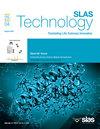人工智能医学影像辅助诊断系统用于腰椎融合术后邻近节段退变风险评估
IF 3.7
4区 医学
Q3 BIOCHEMICAL RESEARCH METHODS
引用次数: 0
摘要
目前对腰椎融合术后邻段退变(ASD)风险的评估主要集中在单一类型的临床信息或影像学表现上。在早期很难表现出明显的退行性变特征,不能充分揭示患者的真实风险。基于影像学的评价结果忽视了患者的临床症状和生活质量的变化,限制了对ASD自然过程的认识和对其危险因素的综合评估,阻碍了制定有效的预防策略。为提高术后管理质量,有效识别ASD特征,本文结合人工智能(AI)医学影像辅助诊断系统,对腰椎融合术后ASD的风险评估进行研究。首先,采用协同注意机制,从单模态特征提取入手,融合计算机断层扫描(CT)和磁共振成像(MRI)图像的多模态特征;然后对相似矩阵进行加权,实现多模态信息的互补性,并通过残差网络结构提高特征提取的稳定性。最后,将全连接网络(FCN)与多任务学习框架相结合,提供更全面的ASD风险评估。实验分析结果表明,与三维卷积神经网络(3D-CNN)、U-Net++和深度残差网络(DRN)三种先进模型相比,本文模型的准确率分别提高了3.82%、6.17%和6.68%;精密度分别提高0.56%、1.09%和4.01%;召回率分别提高了3.41%、4.85%和5.79%。结论表明AI医学影像辅助诊断系统有助于准确识别ASD的特征,有效评估腰椎融合术后的风险。本文章由计算机程序翻译,如有差异,请以英文原文为准。
Artificial intelligence medical image-aided diagnosis system for risk assessment of adjacent segment degeneration after lumbar fusion surgery
The existing assessment of adjacent segment degeneration (ASD) risk after lumbar fusion surgery focuses on a single type of clinical information or imaging manifestations. In the early stages, it is difficult to show obvious degeneration characteristics, and the patients’ true risks cannot be fully revealed. The evaluation results based on imaging ignore the clinical symptoms and changes in quality of life of patients, limiting the understanding of the natural process of ASD and the comprehensive assessment of its risk factors, and hindering the development of effective prevention strategies. To improve the quality of postoperative management and effectively identify the characteristics of ASD, this paper studies the risk assessment of ASD after lumbar fusion surgery by combining the artificial intelligence (AI) medical image-aided diagnosis system. First, the collaborative attention mechanism is adopted to start with the extraction of single-modal features and fuse the multi-modal features of computed tomography (CT) and magnetic resonance imaging (MRI) images. Then, the similarity matrix is weighted to achieve the complementarity of multi-modal information, and the stability of feature extraction is improved through the residual network structure. Finally, the fully connected network (FCN) is combined with the multi-task learning framework to provide a more comprehensive assessment of the risk of ASD. The experimental analysis results show that compared with three advanced models, three dimensional-convolutional neural networks (3D-CNN), U-Net++, and deep residual networks (DRN), the accuracy of the model in this paper is 3.82 %, 6.17 %, and 6.68 % higher respectively; the precision is 0.56 %, 1.09 %, and 4.01 % higher respectively; the recall is 3.41 %, 4.85 %, and 5.79 % higher respectively. The conclusion shows that the AI medical image-aided diagnosis system can help to accurately identify the characteristics of ASD and effectively assess the risks after lumbar fusion surgery.
求助全文
通过发布文献求助,成功后即可免费获取论文全文。
去求助
来源期刊

SLAS Technology
Computer Science-Computer Science Applications
CiteScore
6.30
自引率
7.40%
发文量
47
审稿时长
106 days
期刊介绍:
SLAS Technology emphasizes scientific and technical advances that enable and improve life sciences research and development; drug-delivery; diagnostics; biomedical and molecular imaging; and personalized and precision medicine. This includes high-throughput and other laboratory automation technologies; micro/nanotechnologies; analytical, separation and quantitative techniques; synthetic chemistry and biology; informatics (data analysis, statistics, bio, genomic and chemoinformatics); and more.
 求助内容:
求助内容: 应助结果提醒方式:
应助结果提醒方式:


